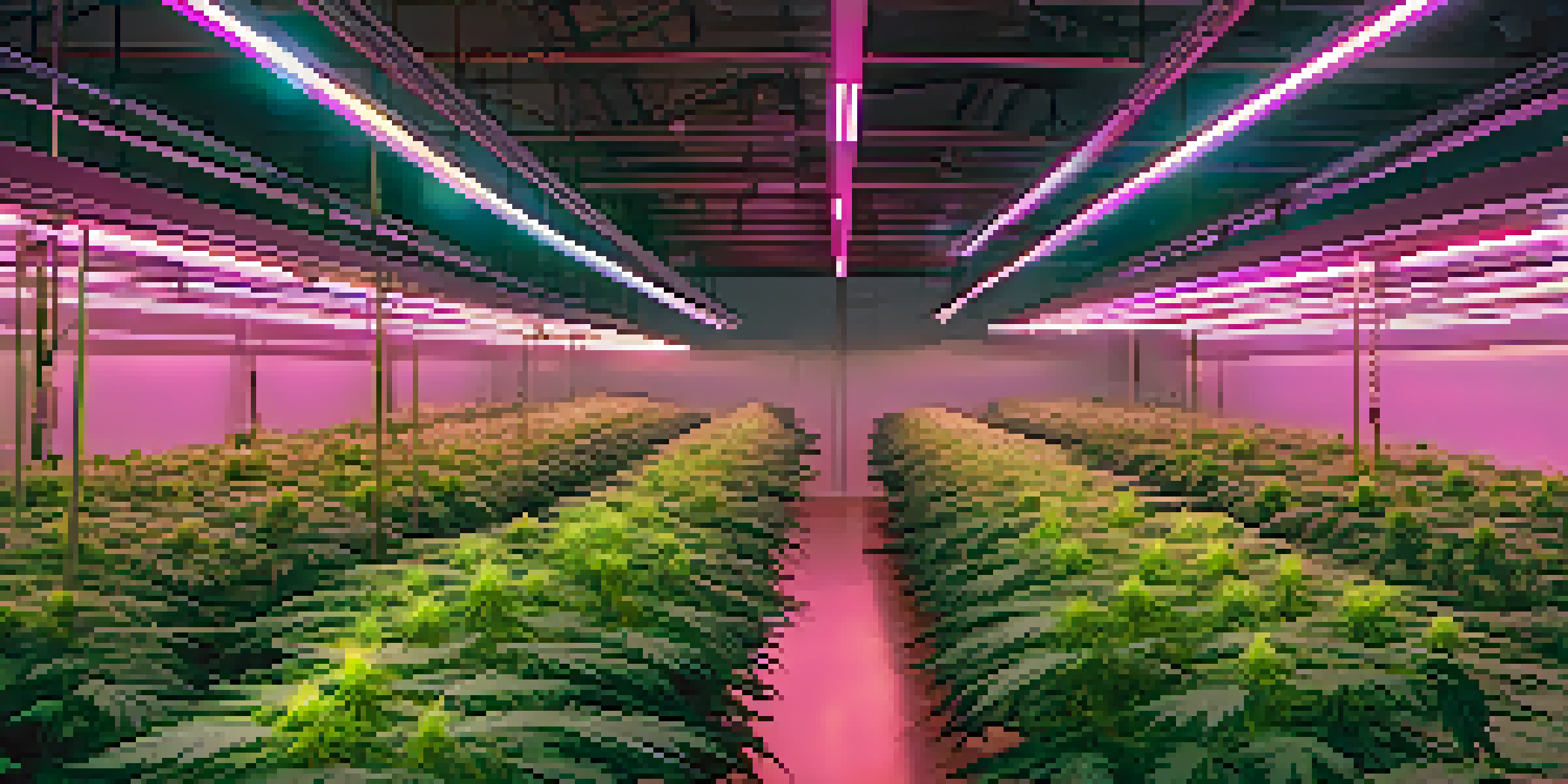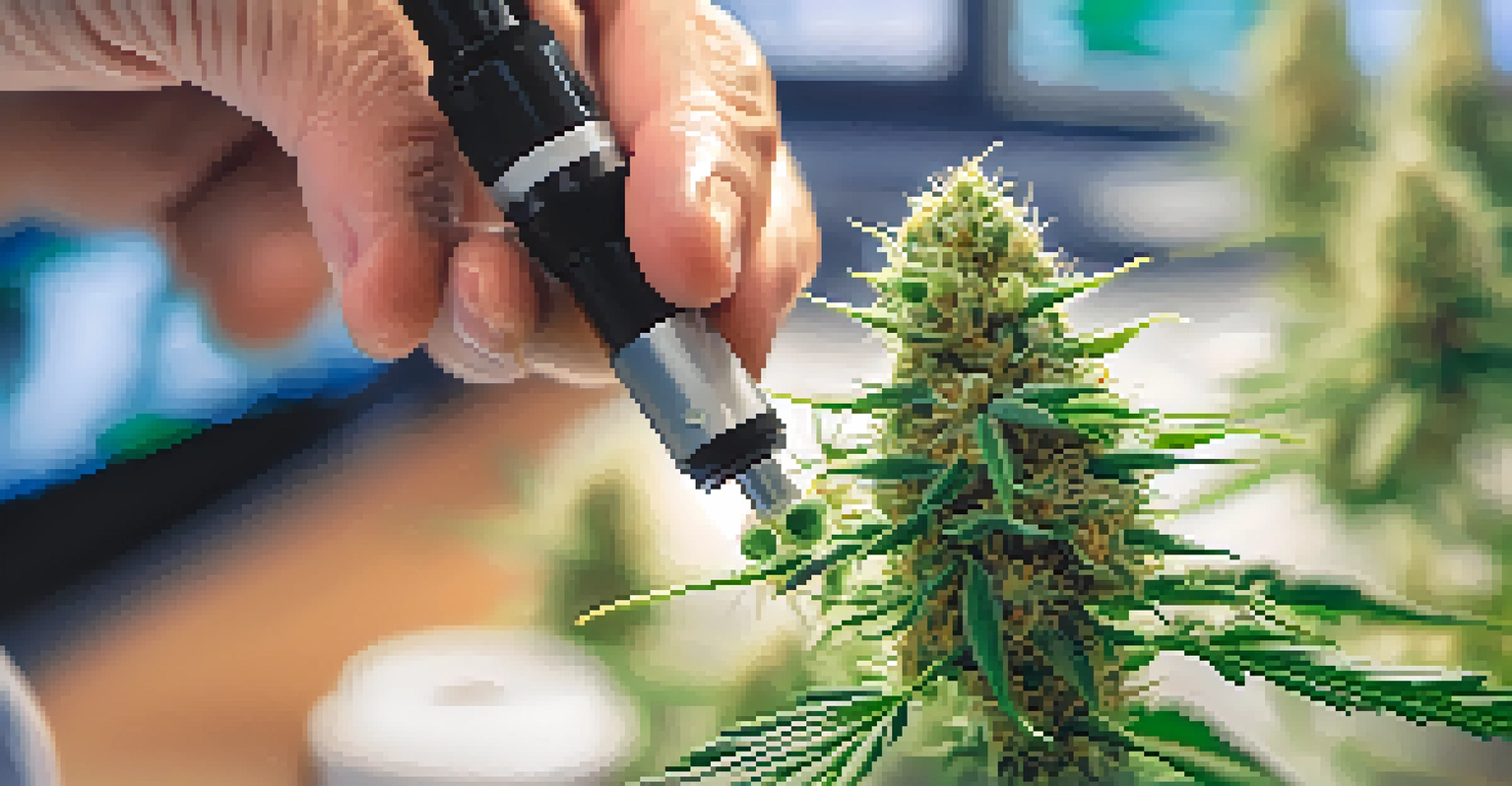The Effect of Legalization on Marijuana Cultivation Practices

Understanding the Shift: Legalization and Its Impacts
The legalization of marijuana has fundamentally changed the landscape of cannabis cultivation. Prior to legalization, growers often operated in secrecy, leading to inconsistent quality and unsafe practices. With legalization, cultivators can now openly share techniques, leading to an overall improvement in cultivation standards and safety.
The legalization of marijuana represents a profound transformation in both cultural attitudes and economic opportunities, paving the way for innovation and sustainability in cultivation.
This shift has allowed for more research and development in cultivation methods. Growers are now experimenting with innovative techniques, such as hydroponics and organic farming, which were previously stifled by legal restrictions. This openness not only enhances the quality of marijuana but also contributes to a more sustainable and environmentally friendly industry.
Additionally, legalization has prompted a more regulated market, ensuring that growers adhere to legal standards. This regulation fosters accountability and encourages best practices, ultimately benefiting consumers who demand higher quality products.
Economic Growth: New Opportunities for Cultivators
Legalization has opened up a wealth of economic opportunities for marijuana cultivators. As a new industry emerges, growers are discovering avenues for profit that didn't exist before, such as market expansion and product diversification. This growth is not just beneficial for large-scale operations but also for small businesses and local farmers.

In regions where marijuana is legalized, job creation in the agricultural sector has surged. Cultivators now require a skilled workforce to manage cultivation, processing, and distribution. This demand for labor not only boosts local economies but also provides stable employment opportunities for communities.
Legalization Boosts Cultivation Standards
The shift to legalized marijuana has led to improved cultivation practices, fostering innovation and safety in the industry.
Moreover, as more states and countries consider legalization, the potential for international trade increases. Cultivators are now looking at the possibility of exporting their products, which could lead to even larger economic benefits and global recognition of quality cannabis.
Sustainability Practices: Greener Cultivation Methods
With legalization, there has been a growing emphasis on sustainable cultivation practices within the marijuana industry. Many growers are adopting eco-friendly methods to minimize their environmental impact, such as using organic fertilizers and conserving water. These practices not only protect the planet but also appeal to environmentally conscious consumers.
In a regulated market, transparency and quality control are paramount. Consumers deserve to know where their products come from and how they are made.
Additionally, legal growers are more likely to invest in renewable energy sources to power their operations. Solar panels and wind turbines are becoming common sights on cultivator properties, helping to reduce their carbon footprint. Such initiatives demonstrate a commitment to sustainability that resonates with a modern consumer base.
By promoting sustainable practices, the industry not only enhances its reputation but also sets a precedent for other agricultural sectors. This shift towards eco-friendly cultivation can inspire a broader movement towards sustainability across various industries.
Quality Control: The Role of Regulation in Cultivation
Legalization has introduced a framework for quality control in marijuana cultivation. Regulatory bodies now oversee the production process, ensuring that growers meet specific standards for safety and quality. This oversight helps to eliminate subpar products from the market, giving consumers more confidence in what they purchase.
Cultivators are now required to conduct rigorous testing for potency and contaminants, such as pesticides and heavy metals. These practices not only protect consumer health but also push growers to enhance their cultivation techniques. As a result, the overall quality of marijuana products has improved significantly.
Economic Growth for Local Farmers
Legalization has created new economic opportunities for cultivators, resulting in job creation and market expansion.
Furthermore, transparency in cultivation practices has become a selling point. Consumers are increasingly interested in knowing where their marijuana comes from and how it is grown. This demand for transparency has encouraged cultivators to adopt best practices and showcase their commitment to quality.
Technological Advancements in Cultivation Techniques
The legalization of marijuana has paved the way for technological advancements in cultivation practices. Growers are now leveraging technology to optimize their operations, from automated irrigation systems to advanced breeding techniques. These innovations allow for greater efficiency and higher yields, benefiting both the grower and the consumer.
For instance, data analytics tools enable cultivators to track plant health and growth patterns in real-time. This data-driven approach allows for more informed decision-making, reducing waste and increasing productivity. As technology continues to evolve, it will undoubtedly play a crucial role in the future of marijuana cultivation.
Moreover, advancements in genetics have led to the development of new cannabis strains with desirable traits, such as higher potency or improved resilience to pests. These innovations not only enhance the product offerings but also cater to the diverse preferences of consumers.
Challenges Faced by Legal Marijuana Cultivators
Despite the numerous benefits of legalization, marijuana cultivators face unique challenges. One significant hurdle is navigating the complex regulatory landscape, which can vary significantly from one region to another. This complexity can be overwhelming for new growers who may struggle to understand compliance requirements.
Additionally, the financial burden of compliance can be daunting. Cultivators are often required to invest in costly infrastructure to meet regulatory standards, which can be a barrier to entry for small-scale growers. This challenge underscores the need for supportive policies that foster inclusivity within the industry.
Sustainability in Cannabis Cultivation
With legalization, there is a greater emphasis on eco-friendly practices, as growers adopt sustainable methods to appeal to conscious consumers.
Lastly, the stigma surrounding marijuana use can still impact cultivators. While legalization has made strides in changing perceptions, some consumers remain hesitant. Cultivators must work to educate the public about the benefits of marijuana and its production, fostering a more positive image in the process.
Consumer Behavior: Changing Attitudes Towards Marijuana
The legalization of marijuana has significantly altered consumer behavior and attitudes. With greater access to legal products, consumers are becoming more discerning, seeking quality over quantity. This shift has prompted cultivators to focus on providing superior products that meet the evolving preferences of their customer base.
Moreover, the rise of the wellness movement has influenced consumer demand for marijuana. Many individuals are turning to cannabis for its potential therapeutic benefits, leading to an increased interest in products such as CBD oils and edibles. Cultivators are responding by diversifying their offerings to cater to this growing market.

As education about marijuana continues to expand, consumers are becoming more informed about the different strains and their effects. This knowledge empowers them to make better choices, which, in turn, encourages cultivators to prioritize quality and transparency in their practices.